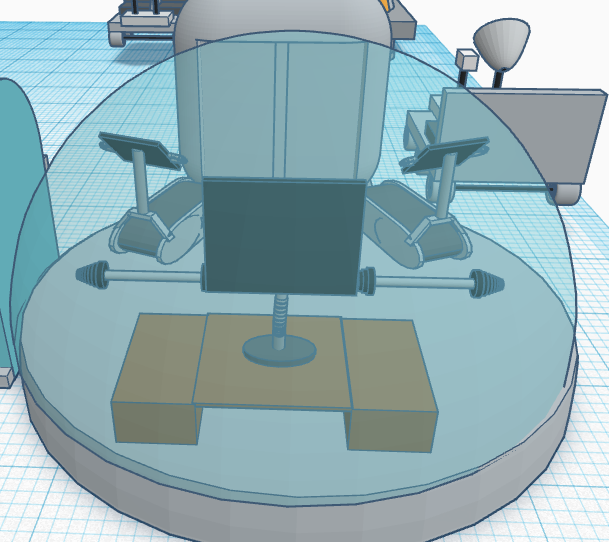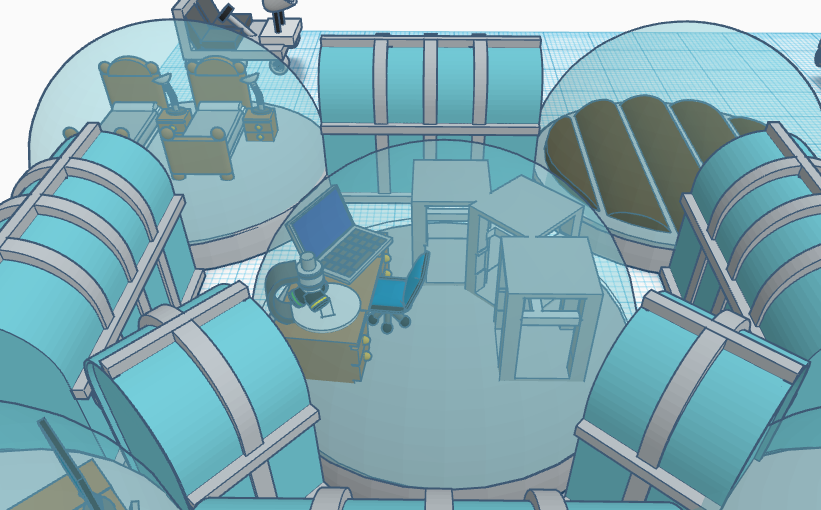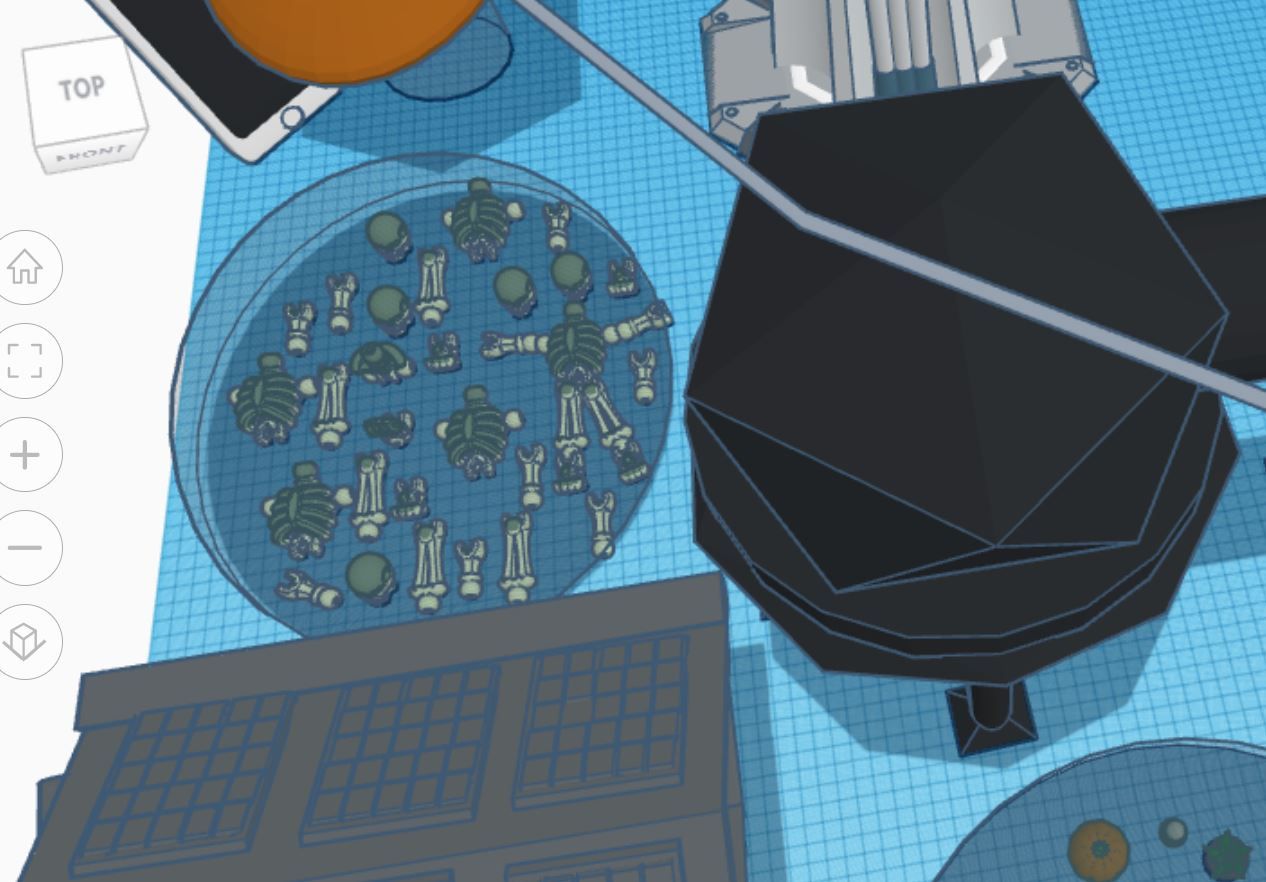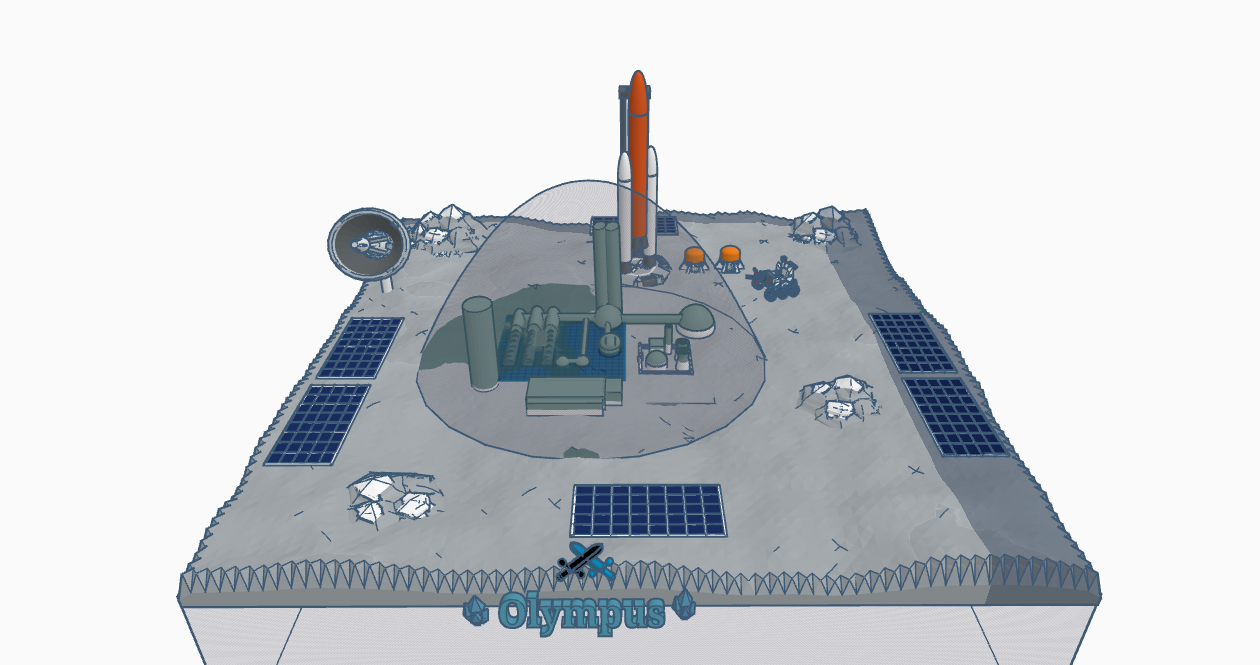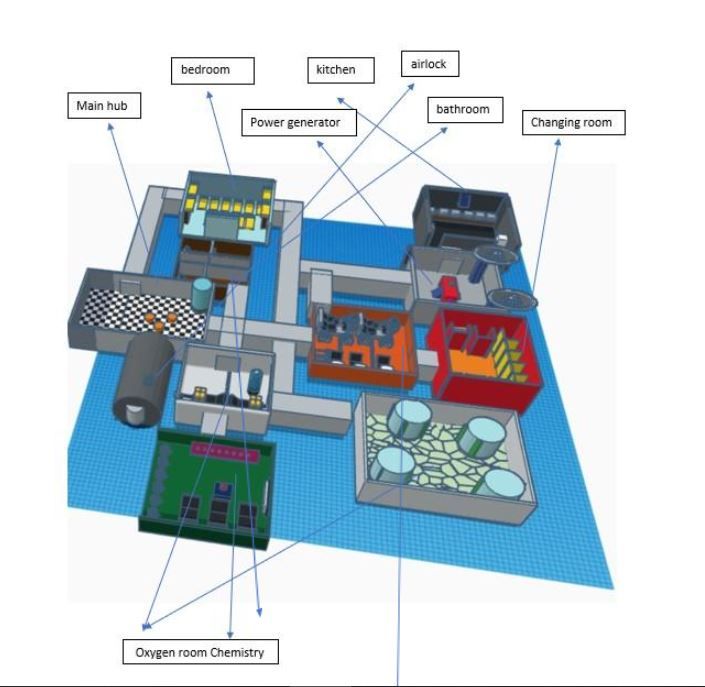Moon Camp Explorers Gallery 2021-2022
In Moon Camp Explorers each team’s mission is to 3D design a complete Moon Camp using Tinkercad. They also have to explain how they will use local resources, protect astronauts from the dangerous of space and describe the living and working facilities.
Team: Hypatia moon base
Hamstel Junior School Southend on Sea United Kingdom 11 1 / 0
External link for 3d
|
Project description
Named Hypatia after one of the first great female mathematicians and astronomers, my moon camp’s main aim is to examine the moon and study whether large numbers of humans could live there. Designed for a small team of two, Hypatia is a compact building consisting of domed structures, designed using geometric shapes for stability and strength. These are linked together with domed archways allowing for easy manoeuvrability around the camp and also allowing sections to be closed off immediately ensuring safety should an accident or explosion take part in any area. There are six main areas. In the central hub is the ‘build room’ consisting of 3D printers, a main computer and scientific equipment. Linked to this is the main ‘Technology room’, this is where the crew can keep in contact with Earth, and complete their lab work on computers. From here, you can travel to the crew’s quarters including sleeping area, washroom and relaxation space. The next dome contains the ‘garden room’ allowing the crew to produce their own food and next we have the ‘kitchen’, a space for coming together and sharing a meal. Finally we have the ‘Gym’, an essential area to keep the crew healthy and fit. From here, we have the main airlock to the outside which includes a cold storage chamber. Outside we have a choice of lunar vehicles depending on the task at hand, our lunar lander, our satellites communication aerials and our solar panels.
|
||||
|
Where do you want to build your Moon Camp?
Shackleton crater Why did you choose this location?
The crew will be able to harvest the continuous sunlight at the crater rim to ensure they always have electricity to study, complete experiments and to live. Here, at the Shackleton Crater, the crew will not have to experience such long lunar nights compared to near the equator. As the crater is permanently shadowed, the crew will be able to mine for ice that they can purify and use in growing their crops and for survival. By placing a satellite at the rim, communication with Earth will also be strong. How do you plan to build your Mooncamp? Which materials will you use?
The initial base will be inflatable domes re-enforced with titanium so that the crew have instant protection. The main base will be built using 3D printers using the natural regolith of the moon to create strength and provide cover. The solar panels will be folded using origami techniques and brought with us from Earth. The first lunar buggy will land at the site complete but the other two will be built on site with a mixture of 3D printed and elements brought from Earth. |
||||
|
Water
|
Food
|
Electricity
|
Air
|
Protection
|
|
Initially, water will be transported from Earth, however, mining down into the crater to find a good supply ice will begin straight away. All waste water will be recycled, purified and re-used. The crew will also study how water is made on the surface of the moon through the reaction of oxygen and hydrogen that is contained within to solar wind. The base will soon become entirely self-sufficient. |
Dehydrated food will initially be sent from Earth. The crew will grow their own crops to feed themselves. A collection of fast growing seeds will be brought with the crew and they will know how to harvest these. The growing dome will have hanging nylon cloths that were originally used as packaging to create an environment for growth, correct temperature and create it’s own water cycle. Lunar soil will be mixed with human waste. The crew will breed insects, such as mealworms to study how they react to lunar living but also as a source of protein, energy and food. |
Solar power will be the main source of power in the camp. The location of the camp will mean that electricity can be made from the sun at all times and will be stored in high capacity batteries. |
At first, the crew will bring their own tanks of oxygen and have a supply for emergencies. Then, the team will begin to extract oxygen from the moon’s surface of regolith. Using electrolysis, the crew can also extract oxygen from the water and the greenhouse in the growing room will also produce oxygen. |
The buildings are geometrically designed to provide strength against winds. They will be covered in a thick layer of lunar rock to protect the crew from radiation exposure and solar collecting panels will be attached to stop them getting too hot for the crew. A team on Earth will monitor the suns radiation particles and try to predict if there is a risk to the crew on the moon. If this happens, the crew will follow procedures for barricading themselves as low as possible. Ideally, a central underground bunker will have been dug to allow the crew some extra protection. |
|
Describe a day on the Moon for one of your Moon Camp astronauts
My alarm wakes me. Every morning starts with a full check of our base. We check oxygen/radiation levels, electricity supply and the building’s condition. We check our satellites and communicate with Earth. We sometimes receive specific tasks which must be done before daily work. Now, we can grab some food.
I check the crops and insects that are growing, ensure they’re watered and harvested and re-seeded. It is important to record everything.
Next, I must use the gym and communicate with a medical professional on Earth, this happens twice a week and we discuss everything from weight, toilet habits and mental health.
Now it’s time for me to head out and clean/check the solar panels, then use the rover to go and check on the drilling machines for the ice.
Everything’s in order, so I return to base for refreshments and return to the garden room to carry out my experiments, recording the information onto the computer. I spend most of the afternoon analysing the soils and water levels and recording growth. My crew member returns from outside and together we discuss our day and share our findings. We check stock, a spade is damaged so I set up the 3D printers to make a new one. Then we return to gym for 40 minutes before making tea. We report back into Earth and then spend the rest of the evening creating videos to send to our families before doing our finals checks on the base and heading to bed. |
||||


